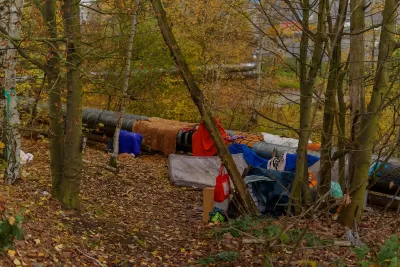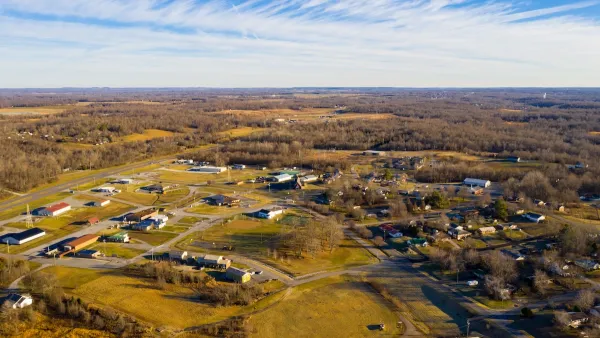The annual ‘point in time’ count fails to capture the diverse types of situations experienced by unhoused people in rural communities.

A study from the Rural Opioid Initiative at Georgia State University found that rural homelessness in the United States could be dramatically underestimated. According to a report by Liz Carey in The Daily Yonder, a survey conducted by the researchers reveals a gap between their findings and federal Point in Time count data.
This is partly because being houseless in rural areas looks different than in urban areas, says researcher April Ballard. “Rural people without housing may live in different situations — with relatives, or in tents, or in cars, Ballard said — instead of living in shelters or on the street. That makes finding and identifying them difficult at best.” A survey in Kentucky estimated the number of unhoused people at five times the number collected in the national annual survey. “In three counties, the research found, the “point in time” counts estimated there were no people who were homeless, while Ballard and her group found more than 100 people in those same counties who said they had used drugs and experienced homelessness in the previous six months.”
The data disparity matters, since the count becomes tied to resource allocation. “From a policy standpoint, it’s incredibly important for us to be capturing accurate information and accurate estimates, so that we’re actually dedicating the right amount of resources to communities,” Ballard points out.
FULL STORY: Study: Rural Homelessness Is Underestimated and Exacerbated by Opioid Epidemic

Maui's Vacation Rental Debate Turns Ugly
Verbal attacks, misinformation campaigns and fistfights plague a high-stakes debate to convert thousands of vacation rentals into long-term housing.

Planetizen Federal Action Tracker
A weekly monitor of how Trump’s orders and actions are impacting planners and planning in America.

In Urban Planning, AI Prompting Could be the New Design Thinking
Creativity has long been key to great urban design. What if we see AI as our new creative partner?

Cal Fire Chatbot Fails to Answer Basic Questions
An AI chatbot designed to provide information about wildfires can’t answer questions about evacuation orders, among other problems.

What Happens if Trump Kills Section 8?
The Trump admin aims to slash federal rental aid by nearly half and shift distribution to states. Experts warn this could spike homelessness and destabilize communities nationwide.

Sean Duffy Targets Rainbow Crosswalks in Road Safety Efforts
Despite evidence that colorful crosswalks actually improve intersection safety — and the lack of almost any crosswalks at all on the nation’s most dangerous arterial roads — U.S. Transportation Secretary Duffy is calling on states to remove them.
Urban Design for Planners 1: Software Tools
This six-course series explores essential urban design concepts using open source software and equips planners with the tools they need to participate fully in the urban design process.
Planning for Universal Design
Learn the tools for implementing Universal Design in planning regulations.
Appalachian Highlands Housing Partners
Gallatin County Department of Planning & Community Development
Heyer Gruel & Associates PA
Mpact (founded as Rail~Volution)
City of Camden Redevelopment Agency
City of Astoria
City of Portland
City of Laramie





























